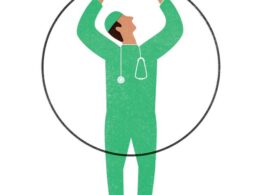healthtransformation
.foundation
Joaquim Cardoso MSc
February 19, 2024
This summary is based on the article “New Study Published in Journal of Medical Regulation Affirms Removing Barriers to PA Practice Improves Patient Access to High-quality Care”, published by AAPA on February 13, 2024.
What is the message?
A recent study published in the Journal of Medical Regulation (JMR) emphasizes that removing barriers to Physician Associate/Assistant (PA) practice enhances patient access to high-quality, cost-effective care while maintaining patient safety.

ONE PAGE SUMMARY
What are the key points?
Study Overview: The article, “Medical Malpractice Payment Reports of Physician Assistants/Associates Related to State Practice Laws and Regulation,” analyzes a decade of medical malpractice payment reports (MMPR) data from the National Practitioner Data Bank (NPDB) alongside state laws and regulations.
Findings: States with permissive practice environments, allowing greater autonomy for PAs, showed no increased risk of PA MMPR occurrences compared to restrictive states. PA practice reforms were associated with a reduction in MMPRs for both PAs and physicians.
Importance of Practice Reforms: Modernizing PA practice laws is crucial for strengthening team-based care and expanding patient access, particularly in communities facing resource challenges.
Public Opinion: A survey reveals strong public support (91% of U.S. adults) for updating PA practice laws to maximize the healthcare workforce’s potential and address community health needs.
Recognition: The article received the JMR Award for Distinguished Scholarship, underscoring its significant scholarly contribution to understanding the relationship between PA practice laws and medical malpractice.
What are the key examples?
PA practice reforms, such as allowing PAs to practice without formal physician collaboration, have shown positive effects on patient care outcomes.
The study’s recognition with the JMR Award highlights its scholarly excellence and contribution to understanding PA practice dynamics.
What are the key statistics?
States with permissive PA practice environments did not exhibit increased PA MMPR occurrences compared to restrictive states.
91% of U.S. adults believe PA practice laws should be updated to fully utilize the healthcare workforce.
Conclusion
The study underscores the importance of removing barriers to PA practice to enhance patient access to high-quality care.
Modernizing PA practice laws not only strengthens healthcare teams but also addresses community health needs by empowering PAs to deliver optimal care.
This research serves as a valuable resource for policymakers and stakeholders seeking evidence-based strategies to optimize healthcare delivery through PA practice reforms.
To read the original publication, click here.












